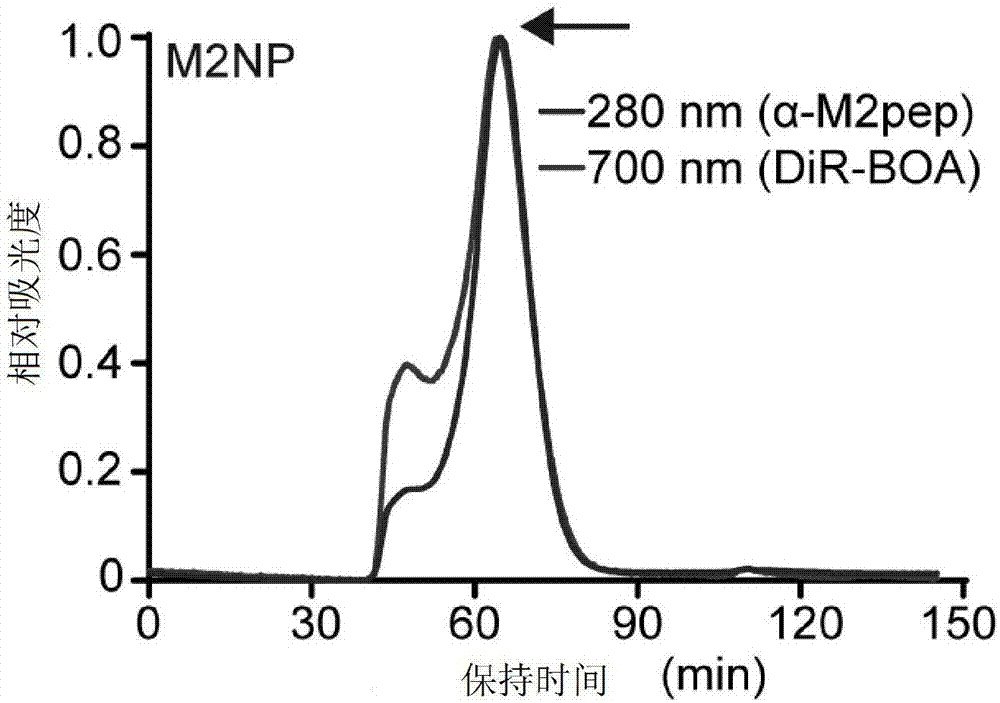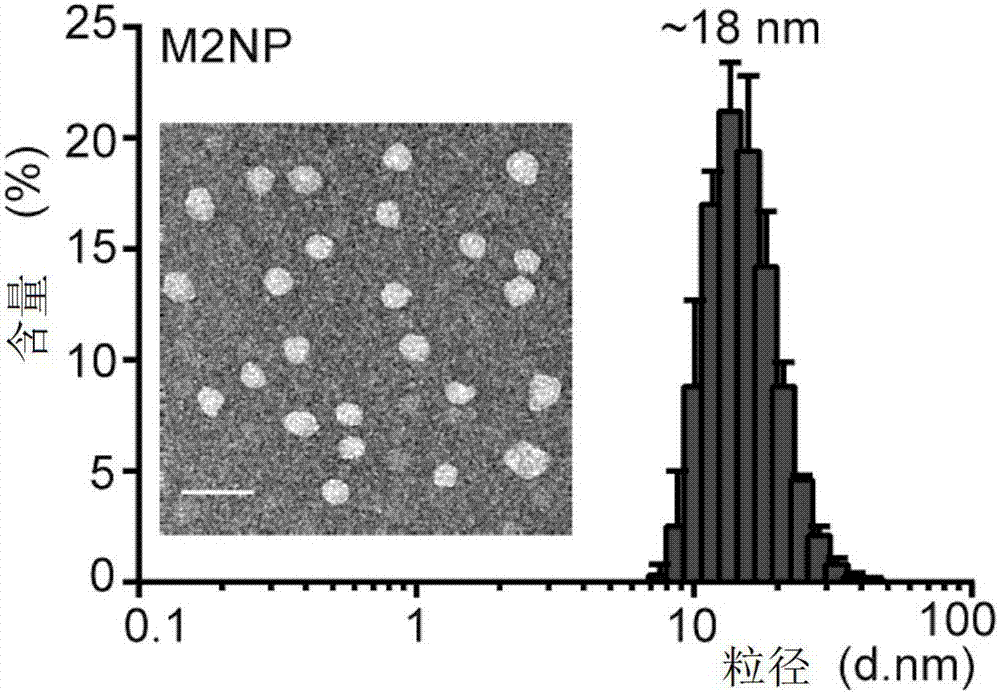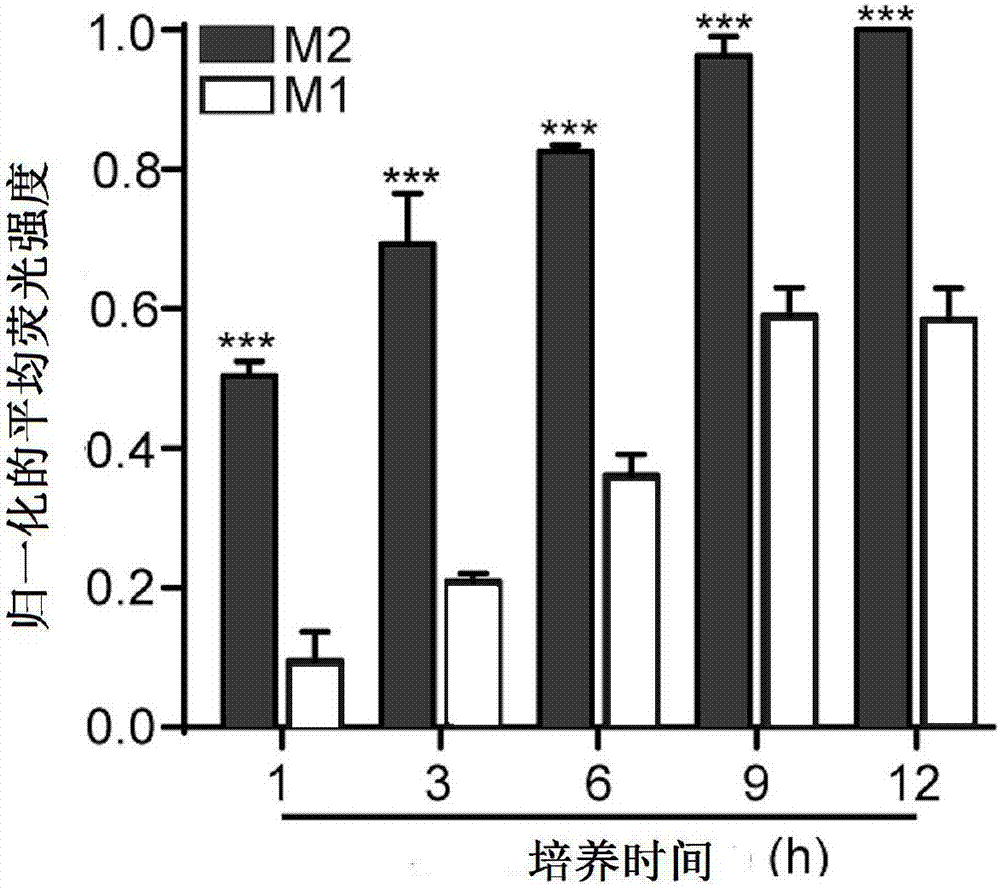Double-target polypeptide of tumor-associated macrophage, nano particle, preparation and application
A macrophage, tumor-related technology, applied in the field of preparation and application, nanoparticle, tumor-related macrophage dual-targeting polypeptide, can solve safety problems and other problems, achieve uniform particle size, inhibit tumor growth, non-toxic Effects of side effects
- Summary
- Abstract
- Description
- Claims
- Application Information
AI Technical Summary
Problems solved by technology
Method used
Image
Examples
Embodiment 1
[0032] Example 1: Tumor-associated macrophage dual-targeting polypeptide
[0033] An embodiment of the present invention provides a dual-targeting polypeptide for tumor-associated macrophages. The dual-targeting polypeptide is composed of an α-helical polypeptide, a linker sequence, and an M2-type macrophage targeting peptide connected in series in the form of covalent bonds. The amino acid sequence of the α-helical polypeptide is FAEKFKEAVKDYFAKFWD, and the amino acid sequence of the α-helical polypeptide is shown in SEQ ID NO.1 in the sequence listing. The amino acid sequence of the linker sequence is GSG. The amino acid sequence of the M2 macrophage targeting peptide is YEQDPWGVKWWY, and the amino acid sequence of the M2 macrophage targeting peptide is shown in SEQ ID NO.2 in the sequence listing.
Embodiment 2
[0034] Example 2: Nanoparticles Targeting Tumor-Associated Macrophages
[0035] An embodiment of the present invention provides a nanoparticle targeting tumor-associated macrophages. The nanoparticle is composed of dual targeting polypeptides, phospholipids, cholesterol lipids and fat-soluble optical probes. The phospholipid is one or a combination of dimyristoylphosphatidylcholine (DMPC) and distearoylphosphatidylethanolamine-polyethylene glycol (DSPE-PEG2000). The liposoluble optical probe is DiR-BOA.
Embodiment 3
[0036] Example 3: Preparation method of nanoparticles targeting tumor-associated macrophages
[0037] An embodiment of the present invention provides a method for preparing nanoparticles targeting tumor-associated macrophages, comprising the following steps:
[0038] S1, 3 μmol DMPC, 0.0114 μmol DSPE-PEG2000, 0.2 μmol DiR-BOA and 0.1 μmol C.O (cholesteryl ester) were dissolved in 200 μL chloroform. After mixing, the mixture was placed in a nitrogen blower and dried with nitrogen gas. The dried mixture was placed in a vacuum desiccator and dried at room temperature for 1 hour. The dried mixture was dissolved in 2 mL of phosphate buffer, mixed with a vortex shaker, and then ultrasonicated at 48° C. for 1 hour using a sonicator.
[0039] S2. Weigh 0.4 μmol of the dual-targeting polypeptide using an analytical balance, and dissolve it in 3 mL of phosphate buffer. Add the peptide solution dropwise to the hydrated phospholipid and cholesterol mixture and mix well. The peptide, p...
PUM
| Property | Measurement | Unit |
|---|---|---|
| Particle size | aaaaa | aaaaa |
Abstract
Description
Claims
Application Information
 Login to View More
Login to View More - R&D
- Intellectual Property
- Life Sciences
- Materials
- Tech Scout
- Unparalleled Data Quality
- Higher Quality Content
- 60% Fewer Hallucinations
Browse by: Latest US Patents, China's latest patents, Technical Efficacy Thesaurus, Application Domain, Technology Topic, Popular Technical Reports.
© 2025 PatSnap. All rights reserved.Legal|Privacy policy|Modern Slavery Act Transparency Statement|Sitemap|About US| Contact US: help@patsnap.com



